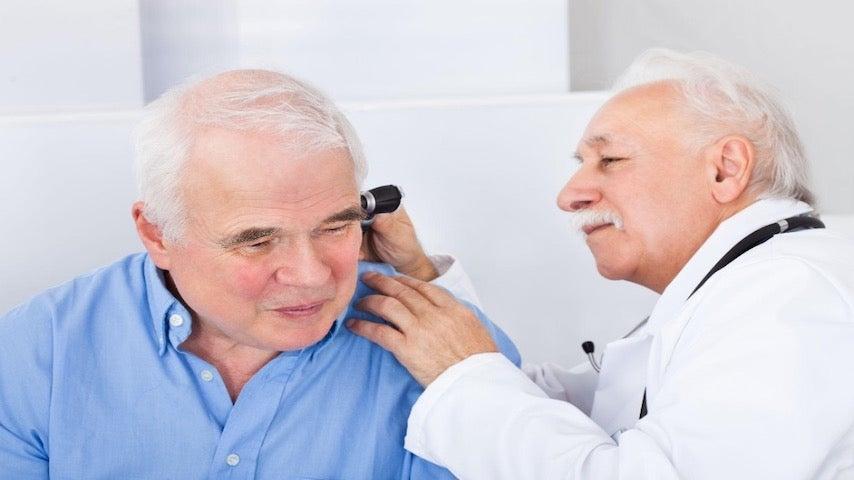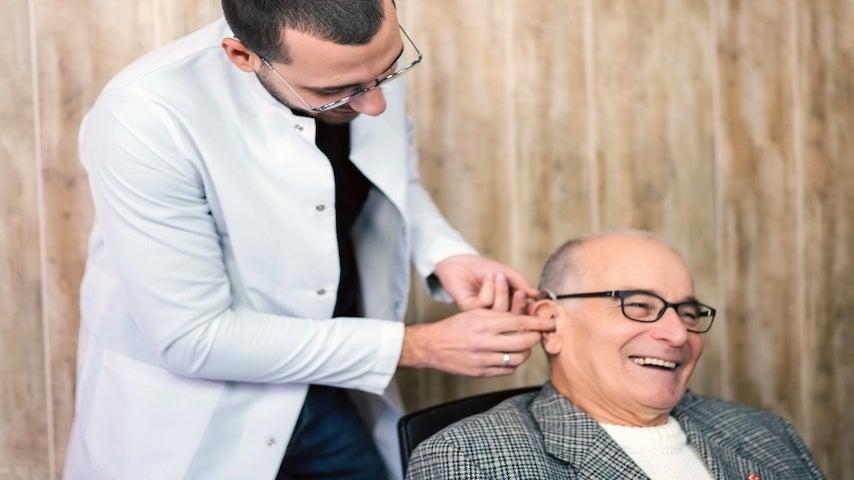
Related Topics
We know hearing aids are important medical devices. But did you also know there are accessories that can improve the listening experience of the pair you own? Choosing the right accessories for your hearing aids can boost your device’s lifespan, performance, and comfort.
While some hearing aid accessories come with your devices, others are bought separately and may not be needed. Keep reading to learn more about types of hearing aid accessories, how much they cost, and which are worth considering.
What are hearing aid accessories?
Hearing aid accessories work with your hearing aids to support and personalize your devices. They address various problems. For example, adaptors to offer a more comfortable, secure fit, and cleaning kits sanitize your devices and help keep them working.
Types of hearing aid accessories
The type of hearing aid accessories you choose will depend on your device, lifestyle, and specific needs. The right accessories can help your hearing aids last longer, improve your hearing experience, enhance your comfort, and more.
Cleaning and maintenance accessories
Clean, well-maintained hearing aids last longer, perform better, and can save you money over time.1 Many hearing aids come with their own cleaning kits, though some don’t and you must buy them separately. Accessories to clean your devices and protect them from a buildup of dust or wax are key to maintaining your hearing aids. Experts recommend cleaning them daily.
“I recommend a little bit of daily cleaning, as well as some required long-term care,” said Stephanie Jaffe, AuD, a doctor of audiology at HearUSA in Augusta, Georgia.
Hearing aid users should brush and wipe their devices once a day. Other weekly or monthly detailing may include changing earpieces and filters.”
Most hearing aid cleaning kits are $20–$30 and include cleaning cloths or wipes, a cleansing spray or gel, a brush to clear off any extra debris, a vent cleaner, and a carrying case. If you’re looking for a more high-tech cleaning device, cleaning systems using UV-C lamps to sanitize and dry your devices are available for $150–$200.
Dehumidifiers or drying boxes can also improve your devices’ sound quality and how long they last. These tools protect your hearing aids from moisture, which decreases their lifespan. Dehumidifiers and dry boxes often range from $150–$250, depending on if they also serve as battery chargers.
Lastly, replacement parts like wax guards, traps, and filters keep earwax and other debris from getting inside your hearing aid and damaging the receiver. These accessories are key to keeping your hearing aids working well, typically costing $5–$10.
Battery and power accessories
No matter what type of hearing aid you choose, you’ll need to replace the battery or recharge it at some point. Rechargeable hearing aids should come with a charging case or cord, but purchasing a backup charging station can be a good idea. Hearing aid recharging cords often cost under $20. A charging case can cost up to $250, depending on your device.
If you choose a hearing aid with replaceable batteries, you’ll always want a backup set available. Hearing aid batteries are often sold in quantities of six or 60, with a six-pack costing as little as $3 and a pack of 60 costing closer to $20. For peace of mind, it may be worth also purchasing a hearing aid battery tester, usually for under $20.
Comfort and protection accessories
Adjusting to wearing new hearing aids can be challenging, but the right accessories can ease that process. If you have over-the-counter hearing aids and can’t find the right fit, you may want to try different hearing aid domes or tips for better comfort and security. Depending on your device, dome multipacks cost between $15–$20.
Hearing aid covers can protect your behind-the-ear devices from sweat, dirt, debris, or wind noise. Covers often range in price from $15–$30 for a set of two.
Hearing aid stabilizer bars locks are small, flexible plastic wires you place in the bowl of your ear canal to keep your hearing aids firmly in place. A pack of four costs about $10.
Listening enhancement accessories
Listening enhancement accessories like TV streamers and remote microphones can further improve your hearing without disrupting those around you. TV streamers plug into your television directly, then connect with your hearing aid via Bluetooth. This allows you to listen at a volume comfortable for you while those around you listen at their own preferred volume. TV streamers have a starting cost of about $150–$300.
Remote microphones are ideal for those who often need to hear one person in a noisy or busy environment. The microphone is worn by your conversation partner, instructor, or other source and connects directly to your device, offering improved clarity and reducing distracting background noise. Remote microphones have a starting price of $200–$400.
Smartphones
Smartphones are one of the most all-purpose hearing aid accessories available. Many hearing aid brands offer a smartphone app to adjust listening modes, volume, and settings. A high-quality hearing aid with a well-designed app can often take the place of several accessories.
Choosing the right hearing aid accessories
One of the first things you’ll need to consider when choosing hearing aid accessories is the type of hearing aid you use. Some accessories are designed to work with specific brands or models. For example, hearing aid covers are designed for behind-the-ear hearing aids and may not fit all brands.
When shopping, consider whether the accessories you choose can improve your device’s comfort, convenience, or performance. It’s a good idea to discuss your options with your audiologist. A hearing professional may be able to give input on the right accessories and other information about managing hearing loss.
Bottom line
Hearing aid accessories should add to the benefits of wearing hearing aids.2 The right accessories can improve your fit and comfort, increase the device’s lifespan, and enhance your hearing aids’ overall performance. Some accessories, such as cleaning kits, dehumidifiers, and replacement parts, are essential for maintenance and ensuring your hearing aids function well over time. Comfort-related accessories can help with the initial adjustment period and your willingness to wear them over time. Some accessories enhance your listening experience, allowing for clearer hearing in specific environments.
When choosing hearing aid accessories, consider your specific needs, the type of hearing aids you use, and whether the accessories will improve comfort, convenience, or sound quality. Ask an audiologist for help selecting the right accessories for you.
Frequently asked questions
How can I keep my hearing aids from falling out?
Tools like stabilizer bars can help keep your hearing aids from falling out. The plastic, flexible bar attaches to your hearing aid and rests in the bowl of your ear canal to keep your hearing aids firmly in place.
What are caption call phones?
Caption call phones are phones that display captions of what the other person is saying. This is also known as a captioned telephone service. Captioned telephone services are funded at the state or federal level and free for those with hearing loss. Click here for a list of captioned telephone services in your state.
Where can I buy hearing aid accessories?
You can buy hearing aid accessories from hearing clinics, directly from OTC hearing aid companies, at drugstores like CVS and Walgreens, and from large retailers like Amazon and Walmart. For more specialized accessories like devices for listening enhancement, you’ll likely need to purchase them from hearing clinics or directly from hearing aid companies.
Sources
1. National Institute of Deafness and Other Communication Disorders. Hearing Aids. Oct. 11, 2022. Found on the internet at: https://www.nidcd.nih.gov/health/hearing-aids
2. U.S. Food and Drug Administration. Hearing Aid Benefits and Limitations. Nov. 18, 2022. Found on the internet at: https://www.fda.gov/medical-devices/hearing-aids/hearing-aid-benefits-and-limitations




